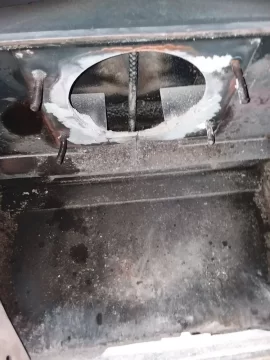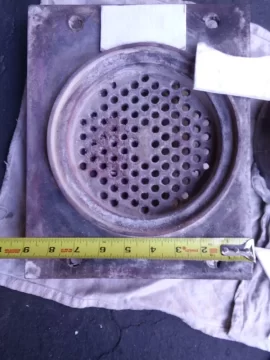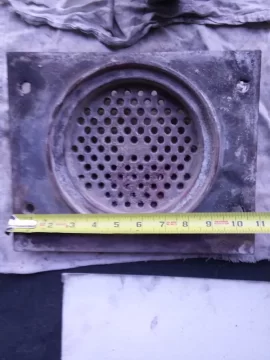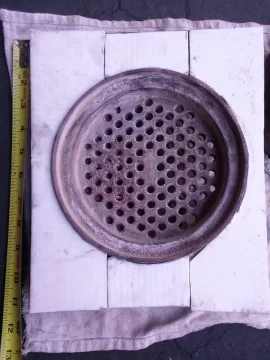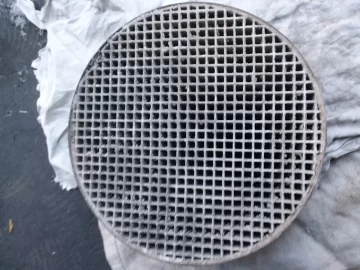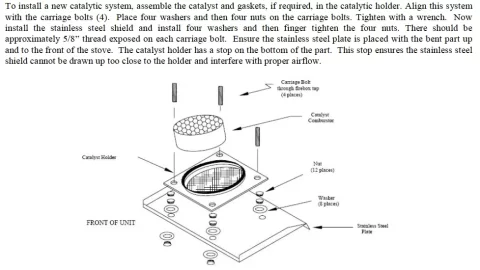Hi,
Did I ruin my Catalytic Combustor?
It's on a Country Flame E1-6 wood stove. Stove is probably 30+ years old. After cleaning the combustor with a shop vac. I re-installed the heat shield but left it about 1/2 inch below the combustor, leaving a gap between the shield and the combustor. The shield is 1/8 inch thick sheet of steel. It all was working fine for about 6 weeks, then when I got it good and hot, the combustor housing got glowing red and thick opaque grey smoke came out the chimney. I immediately pulled the lever to bypass the combustor and let the fire die. Now I've removed the combustor housing and combustor. The holes in the housing were very clogged with ash and what looks like powered grains of metal. The iron housing turned a rusty red.
Anyway, I've now ordered a new combustor. But hoping to learn what happened.
Should the heat shield have been installed right up against the combustor housing? What that the problem?
Can I use the stove without the combustor in place while I wait for the new combustor to arrive?
Thanks for any input.
Mike
Did I ruin my Catalytic Combustor?
It's on a Country Flame E1-6 wood stove. Stove is probably 30+ years old. After cleaning the combustor with a shop vac. I re-installed the heat shield but left it about 1/2 inch below the combustor, leaving a gap between the shield and the combustor. The shield is 1/8 inch thick sheet of steel. It all was working fine for about 6 weeks, then when I got it good and hot, the combustor housing got glowing red and thick opaque grey smoke came out the chimney. I immediately pulled the lever to bypass the combustor and let the fire die. Now I've removed the combustor housing and combustor. The holes in the housing were very clogged with ash and what looks like powered grains of metal. The iron housing turned a rusty red.
Anyway, I've now ordered a new combustor. But hoping to learn what happened.
Should the heat shield have been installed right up against the combustor housing? What that the problem?
Can I use the stove without the combustor in place while I wait for the new combustor to arrive?
Thanks for any input.
Mike


